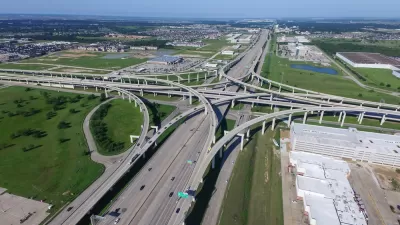Former Secretary of Labor Robert Reich gives his two cents about the need to expand public transit.
"For years, policymakers have wondered just how high gas prices would have to go before drivers switch to public transportation. The answer has been assumed to be very high because Americans supposedly are in love with our cars. Yet now we know there's a tipping point, and it's not quite as high as policymakers have guessed. It's around $4 a gallon. We know that's the tipping piont because suddenly millions of Americans are switching to buses, trains and subways to go to work.
Rather than bemoaning this remarkable turnaround we should be celebrating it because public transit not only reduces congestion but also reduces the nation's energy needs and cuts carbon emissions that bring on global warming.
Problem is, the nation doesn't have nearly enough public transportation to handle the new demand. Even more absurdly, right now when it's needed the most, public transportation across the land is being cut back. This is because transit costs are soaring by the same skyrocketing fuel prices that are forcing people out of their cars, at the same time transit revenues are shrinking because most transit systems depend largely on sales taxes, now dwindling as consumer purchases decline in this recession. A survey of the nation's public transit agencies released last Friday showed 21 percent of rail operators now cutting back and 19 percent of bus operators."
Thanks to Jeff Wood
FULL STORY: With Gas at $4 a Gallon, We Need Public Transportation, But Why We Can't Get It

Depopulation Patterns Get Weird
A recent ranking of “declining” cities heavily features some of the most expensive cities in the country — including New York City and a half-dozen in the San Francisco Bay Area.

California Exodus: Population Drops Below 39 Million
Never mind the 40 million that demographers predicted the Golden State would reach by 2018. The state's population dipped below 39 million to 38.965 million last July, according to Census data released in March, the lowest since 2015.

Chicago to Turn High-Rise Offices into Housing
Four commercial buildings in the Chicago Loop have been approved for redevelopment into housing in a bid to revitalize the city’s downtown post-pandemic.

New Park Opens in the Santa Clarita Valley
The City of Santa Clarita just celebrated the grand opening of its 38th park, the 10.5-acre Skyline Ranch Park.

U.S. Supreme Court: California's Impact Fees May Violate Takings Clause
A California property owner took El Dorado County to state court after paying a traffic impact fee he felt was exorbitant. He lost in trial court, appellate court, and the California Supreme Court denied review. Then the U.S. Supreme Court acted.

How Urban Form Impacts Housing Affordability
The way we design cities affects housing costs differently than you might think.
City of Costa Mesa
Licking County
Barrett Planning Group LLC
HUD's Office of Policy Development and Research
Mpact Transit + Community
HUD's Office of Policy Development and Research
City of Universal City TX
ULI Northwest Arkansas
Town of Zionsville
Urban Design for Planners 1: Software Tools
This six-course series explores essential urban design concepts using open source software and equips planners with the tools they need to participate fully in the urban design process.
Planning for Universal Design
Learn the tools for implementing Universal Design in planning regulations.





















